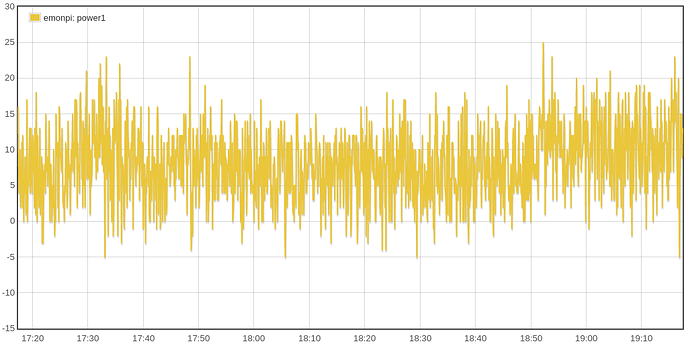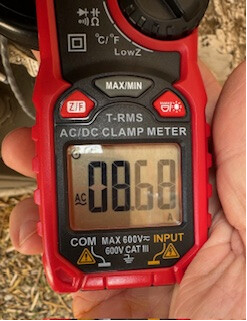A few more details.
I have just made sure that I hadn’t corrupted the Emonhub config file. I dont think I have - is there anywhere that can change an input ?
[[5]]
nodename = emonpi
[[[rx]]]
names = power1,power2,power1pluspower2,vrms,t1,t2,t3,t4,t5,t6,pulsecount
datacodes = h, h, h, h, h, h, h, h, h, h, L
scales = 1,1,1,0.01,0.1,0.1,0.1,0.1,0.1,0.1,1
units = W,W,W,V,C,C,C,C,C,C,p
I have dug up the cable (it wasn’t a big job) and laid it so that it was away from the house and got the same results. I don’t think it is the route of the cable.
I have tried connecting the earth at each of the cable and the same result. I did notice that the input read -176W without the earth connected but -340W with it connected.
I have now connected a completely different cable (an old reel of telephone wire I had). I left the cable on the reel and connected a CT to one end and the Emonpi to the other. This was significantly better at just 27W out - I suspect I wasn’t overly careful about the connections.
I am therefore questioning the cable now. This is the spec:
Specification:
Conductor Material – Pure Copper
Area, conductor CSA – 0.22mm²
Conductor make-up – 7/0.2mm
Shield braid make-up – 96/0.1mm
Filler – Cotton Yarn
External diameter – 5.15mm
Impedance – 75Ω
Capacitance Core To Core - 80pF/m
Capacitance Core To Screen - 215pF/m
Cable type – 2 Core Microphone
Insulation Material – PVC
Sheath Material – Polyvinyl Chloride PVC
Colour – Grey
Operating Temperature – -20ºC to +60ºC
A highly flexible outer PVC sheath and cotton in-fills next to the conductors makes this cable extremely resistant to damage that may be caused by bending or twisting and so it will stand up to heavy use. The pure copper conductors ensure the signal quality is excellent, the dense shielding surrounding the conductors keeps out any unwanted interference.
Is there anything about this that would concern you ?
Cheers




